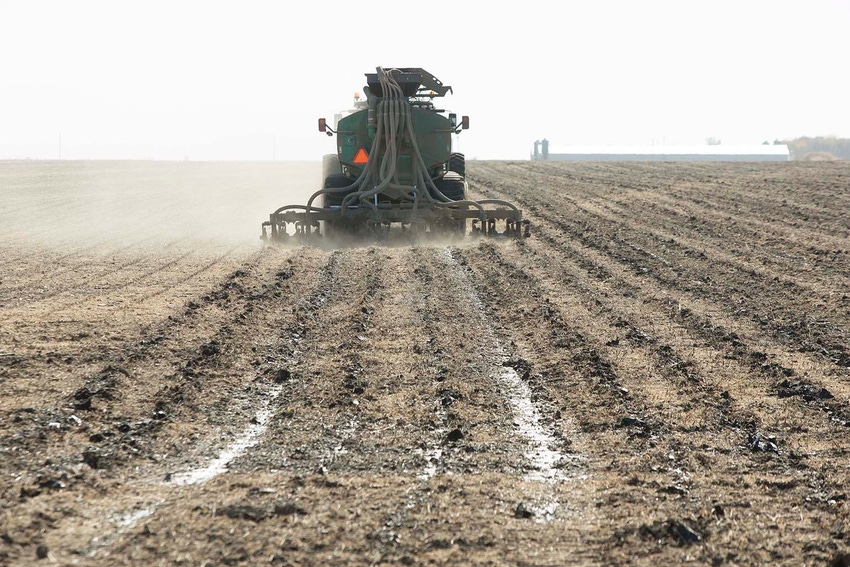Preparing for early winter manure application
If switching manure application to surface application, there are a few additional considerations you should make in your nutrient application.
November 20, 2018

Source: Iowa Manure Management Action Group
It has been a challenging fall application season in a lot of the Upper Midwest, with a delayed harvest and wet soil conditions early, followed by a cold fall. Here in Iowa, soil temperatures are hovering just above the freezing mark. Given the challenging conditions we’ve had, it is important to review the rules, so we can be as prepared as possible for when soils do freeze.
In 2010, a rule governing winter application of manure on snow-covered and frozen ground was passed. This law only applied to liquid manure from confinement animal feeding operations with more than 500 animal units and only limits application during specific dates (from Dec. 21 to April 1 on snow-covered ground, and from Feb. 1 to April 1 on frozen ground). This means for the next month, manure application from these facilities is permissible; however, some operations may have to switch from a planned injection application to surface application if the ground becomes impenetrable. If this change is needed please remember the following:
1. If a farm claimed injection/incorporation points on the MasterMatrix, it is required you inject/incorporate, or you must get permission from the Iowa Department of Natural Resources before switching to surface application.
2. If you have either an National Pollutant Discharge Elimination System permit or an Natural Resources Conservation Service comprehensive nutrient management plan, check this document carefully to see if you have any application restrictions that may be impacted by frozen or snow-covered ground.
If you are switching manure application to surface application, there are a few additional considerations you should make in your nutrient application. In terms of nutrient management planning, look at updating the volatilization correction factor. Based on Table 2 found in PMR 1003, “Using Manure Nutrients for Crop Production” a correction factor of 0.75-0.90 is recommended for not incorporated surface applied liquid manure and a factor of 0.70-0.85 is recommended for not incorporated surface applied solid manure.
Also check how switching to surface application will impact the field’s P-Index to ensure both the new rate and application method is allowed.
Finally, review your fields for setback distance requirements. With injection/incorporation, the required setback distances are often zero, but when switching to surface application setbacks of 750 feet from residences and public use areas, 200 feet from water sources and other designated areas, and 800 feet from high quality water resources will be required for liquid manure.
Manure handling regulations vary by state, so be sure to check for specifics in the state in which the manure is to be applied.
You May Also Like



